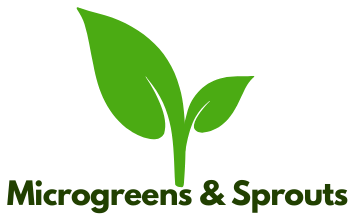Collard
Collard Seeds
Collard seeds come from the collard green plant, a member of the Brassica family related to cabbage, kale, and broccoli. Known for their large, dark green leaves, collards are popular in Southern cuisine. When sprouted, collard seeds produce tender, crunchy sprouts with a mild, slightly peppery flavor, perfect for salads, sandwiches, and garnishes.
History of the Seed
Collard greens have been cultivated for thousands of years, originating in the Mediterranean region. They were a staple crop in ancient Greece and Rome and later became integral to Southern American cooking. The practice of sprouting collard seeds for consumption is a modern adaptation that leverages their nutritional benefits and quick growth.
Nutritional Information
Per 100 grams of collard sprouts (approximate):
- Calories: 35 kcal
- Protein: 3.5 g
- Carbohydrates: 6 g
- Fiber: 3 g
- Fat: 0.5 g
- Vitamin A: 3000 IU
- Vitamin C: 40 mg
- Calcium: 150 mg
- Iron: 1.2 mg
Nutrition Benefits
- Rich in vitamins A, C, and K which support immune function, skin health, and bone strength.
- High in antioxidants that help reduce inflammation.
- Good source of fiber aiding digestion.
- Contains calcium and iron important for bone health and oxygen transport.
- Low in calories and fat, making it ideal for healthy diets.
Sprouting Process and Directions
Soak Time
Soak collard seeds in clean water for 8 to 12 hours to soften the seed coat.
Rinse Time
Rinse seeds thoroughly 2 to 3 times daily to keep them moist and prevent mold.
Growing Time
Keep seeds in a sprouting jar or tray in a cool, dark place initially; then move to indirect light after 2 days.
Harvest Time
Sprouts are ready to harvest when they reach about 1 to 2 inches long, typically in 4 to 6 days.
Yield
Approximately 1 tablespoon of dry seeds yields about 1 cup of fresh sprouts.
Days to Sprout
Collard seeds generally begin sprouting within 2 days after soaking.
Best Growing Methods
- Use a sprouting jar with a mesh lid or a shallow tray.
- Maintain good airflow and keep seeds moist but not soaked.
- Avoid direct sunlight until sprouts appear green; indirect light encourages chlorophyll production.
- Use filtered or distilled water for rinsing if possible.
Storage
- Store harvested sprouts in an airtight container in the refrigerator.
- Consume within 3 to 5 days for best freshness and nutrition.
Using the Ready Sprouts
- Add raw to salads, sandwiches, wraps, or as a garnish.
- Lightly sauté or steam as a side dish.
- Blend into smoothies for a nutritional boost.
Helpful Tips
- Use fresh, high-quality seeds specifically labeled for sprouting.
- Keep sprouting equipment clean to avoid contamination.
- If sprouts develop an off smell or slimy texture, discard immediately.
- Experiment with growing time to find your preferred sprout length and flavor.
Did You Know?
Collard greens are part of the same family as broccoli and kale and share many of their health benefits. Sprouting increases the bioavailability of nutrients, making them easier for your body to absorb compared to mature leaves.
